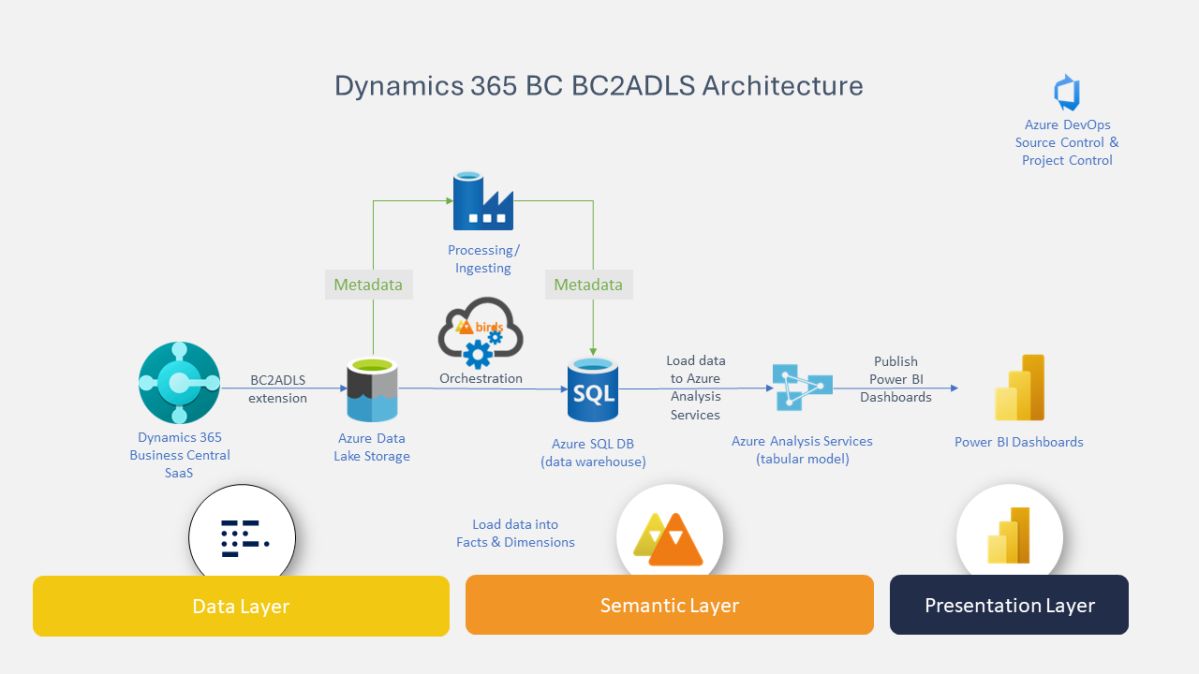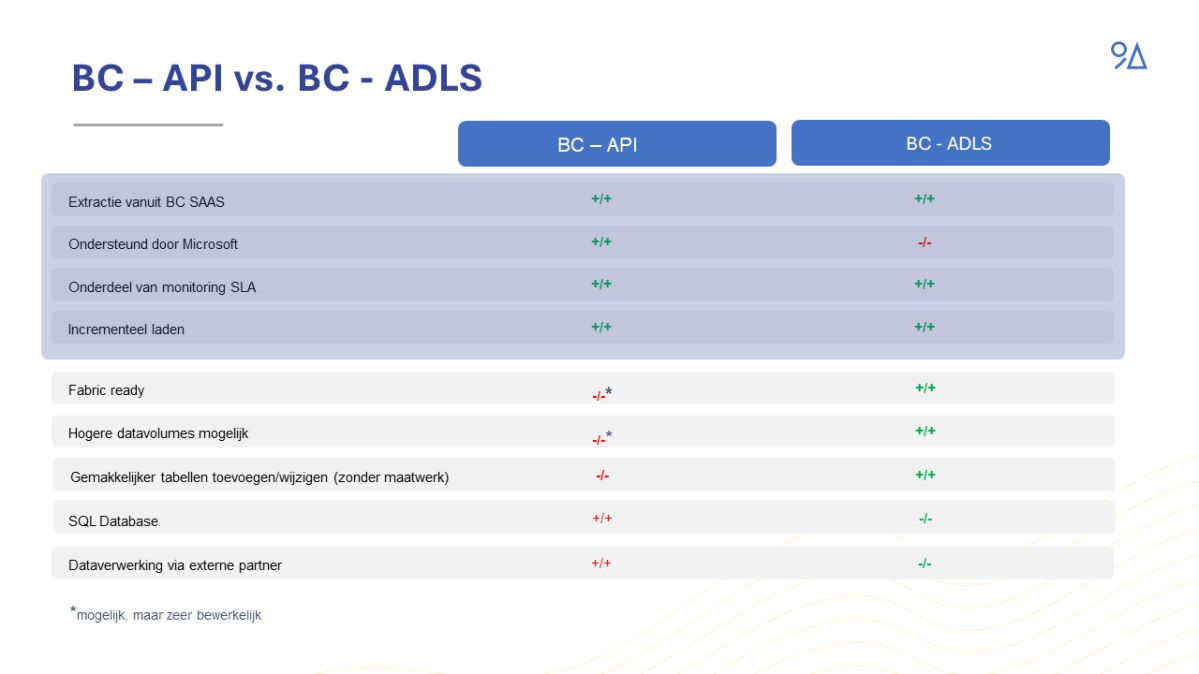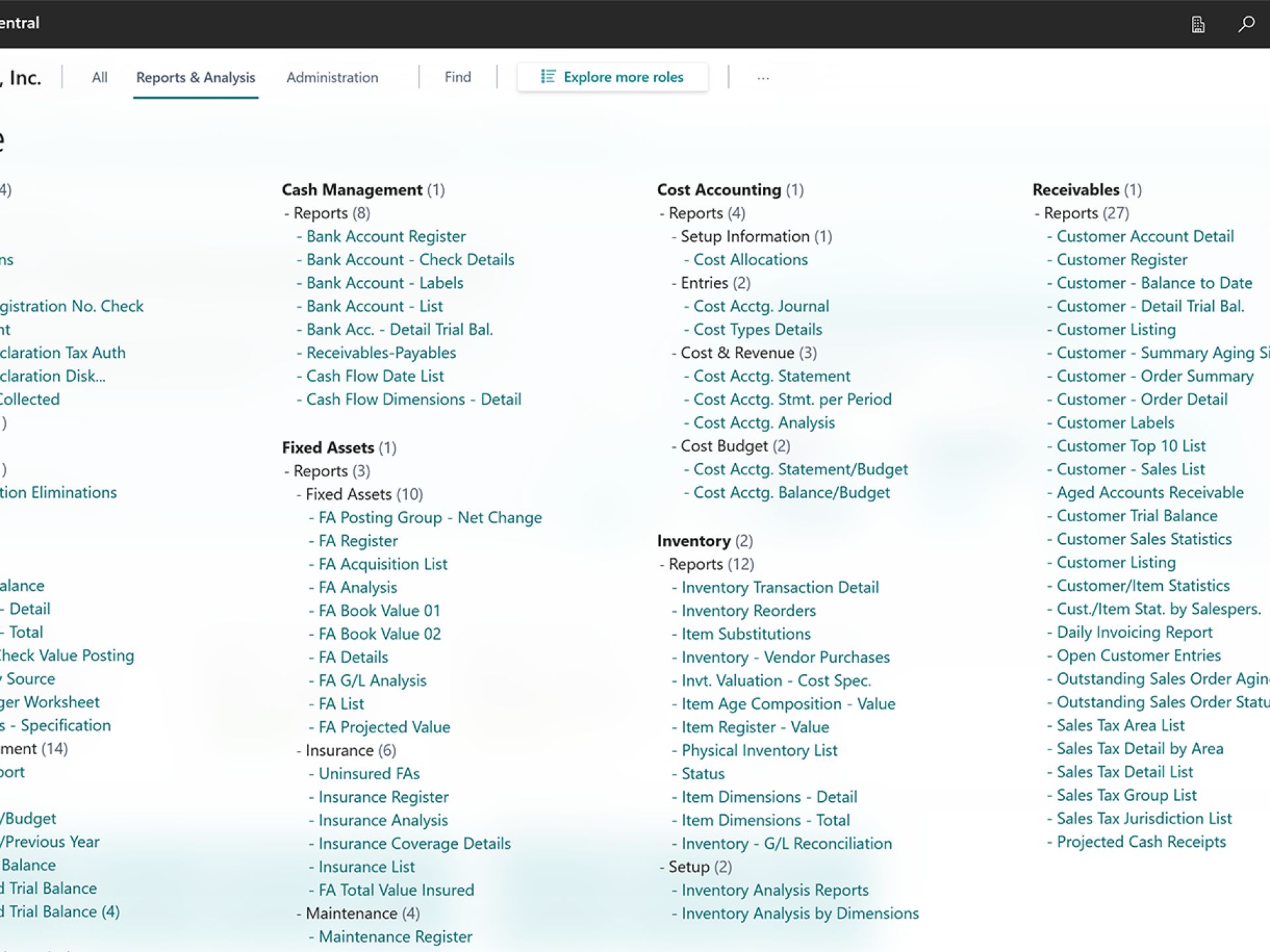Once you want more than this one can offer you, data volumes increase or you want to do more advanced calculations, you start using the APIs provided by Microsoft, or you purchase a standard solution like BIRDS.
In addition to the APIs, there is now a new way to access data in the form of the open source solution BC2ADLS.
This option is growing in popularity because it removes the limitations that the APIs face.
How does BC2ADLS work?
In short; it facilitates a standardized way of accessing data from Business Central to Azure Data Lake Storage (BC2ADLS).
An extension is used within Business Central, which transfers the data from Business Central to Azure Data Lake Storage. This is done incrementally so that only changes are accessed.
The data is then still unstructured, in the form of separate files, but is converted to a database using Azure Synapse or Fabric, which can then be used to create a Tabular data model for reporting purposes in Power BI.
What problem does BC2ADLS solve?
Many companies using Business Central and the APIs provided along with it are running into performance limitations when it comes to unlocking more than 20,000 lines at a time.
In addition, developing customizations within APIs is complex and time-consuming.
For many organizations, using BC2ADLS is also a prelude to using Microsoft Fabric, where these techniques will also be used.
Can we implement BC2ADLS ourselves?
As mentioned, BC2ADLS is open source software that anyone can download and use as they see fit. However, this requires specific content knowledge.
The challenge for many companies then follows in transforming the unstructured Data Lake data into a usable data model. Which can be used as a source for Power BI, for example.
It is also expected that Microsoft will develop BC2ADLS techniques itself and/or make them part of the new Microsoft Fabric platform.
It is therefore more interesting for many companies to seek cooperation with a partner or software solution that can implement BC2ADLS at the lowest possible cost and impact and create a path for the future.
This is where BIRDS can facilitate, both in the current landscape with APIs and BC2ADLS and in the future with Microsoft Fabric.


